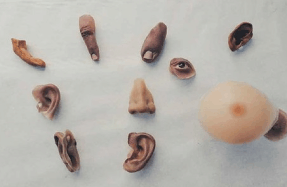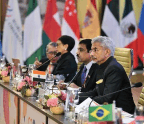

IN JUNE THIS YEAR, the Supreme Court dismissed charges of criminal conspiracy against Prime Minister Narendra Modi and others in relation to the 2002 Gujarat violence. Immediately after the judgment, the Gujarat police arrested the activist Teesta Setalvad and RB Sreekumar, a former director general of the state police. Along with the former police officer Sanjiv Bhatt, who is already in jail, Setalvad and Sreekumar were accused in a first-information report, filed by a police official, of forgery and fabricating evidence, among other things, to implicate “innocent” people.
On 27 February 2002, the Sabarmati Express carrying Hindu karsevaks returning from Ayodhya, caught fire near the Godhra railway station. Gujarat witnessed intense communal violence for three days, which spilled over into the following months. Mobs killed over a thousand people, most of them Muslims. Many more people were injured, and over a hundred and fifty thousand people were displaced. Modi, who was the state’s chief minister at the time, faced severe condemnation both at home and internationally for his government’s inaction to stem the violence. The anti-Muslim pogrom of 2002 remains a bloody stain on Modi’s career, despite his meteoric rise to political power.
Zakia Jafri, whose husband, the former Congress member of parliament Ehsan Jafri, was brutally murdered by a mob, filed a petition in 2006 against Modi and 63 others. The Supreme Court set up a special investigation team in 2008. The SIT submitted its closure report in 2012, rejecting criminal charges against Modi and the others for lack of “prosecutable evidence.” Apart from a protest petition, which is more than five hundred pages long, that she filed in 2013, Jafri filed another plea to the Supreme Court, in 2018, against its acceptance of the SIT report. The recent judgment, dismissing Jafri’s 2018 petition, has relied heavily on the investigations carried out by the SIT. The court expressed appreciation for the SIT’s “indefatigable work” and declared “that no fault can be found with the approach of the SIT.” It stated that the final SIT report, “discarding the allegations regarding larger criminal conspiracy (at the highest level),” was “backed by firm logic, expositing analytical mind and dealing with all aspects objectively.”
While it is the judges’ prerogative to choose to rely on the SIT report in reaching their conclusion, no court judgment can put the SIT report itself beyond public scrutiny. A detailed study of the report makes it difficult to agree with the claim that there was no fault in the SIT’s approach or that the report was indeed guided by objectivity or “firm logic.”
Time and again, the SIT undercuts the evidence it has marshalled, often reaching conclusions that defy logic.
To begin with, even if the court, relying on the SIT report, has found no evidence of “a larger criminal conspiracy,” this is not the equivalent of absolving the Modi government for its conduct during the pogrom. The very fact that communal violence took place over a prolonged period is suggestive of command failure at the highest levels. This conclusion is further strengthened by the evidence gathered in the SIT report itself, which raises serious question about the actions and the intent of the Gujarat government during this period.
For instance, a look at the transfer of a number of officials who did their duty during the violence suggests a pattern. Good officers who contained the riots were posted out, while ineffective officers continued to remain in place. But the SIT chooses to dismiss this by claiming transfers are the prerogative of the government. This reasoning makes little sense in a case where the government itself is the accused.
A close reading of the report also does not support the idea that the policing failure was merely a case of the Gujarat government being overwhelmed by the suddenness and the extent of the violence. It suggests that, during the first two months, Muslims were so disproportionately targeted in police firing that this cannot be explained as mere chance.
The Bharatiya Janata Party government selectively chose to favour the appointment of public prosecutors from its allied organisation, the Vishva Hindu Parishad, even in cases where those accused belonged to the Sangh Parivar. During this period, Modi gave at least one interview that sought to explain the violence as a reaction and used dogwhistles about Muslims in his public speeches. The SIT glossed over these statements by repeating a meaningless clarification by Modi.
Further, the evidence gathered by the SIT in the immediate aftermath of the Godhra fire, regarding the handling of the dead bodies, suggests undue interference of the VHP in violation of all norms and even provides evidence of a funeral procession of 12 bodies during the day in Ahmedabad. But the SIT blames the handover of bodies to the VHP on a junior official and does not even discuss the procession.
Finally, the SIT report itself provides numerous instances where observations and allegations made by Sreekumar hold up. The SIT uses the fact that he was overlooked for a promotion to cast doubt on his






